In 1949, Simone de Beauvoir opined that when a woman is admitted to the world of art “she is on her best behavior she is afraid to disarrange, to investigate, to explode, she feels she should seek pardon for her literary pretensions through her modesty and good taste.” In Mujer, Erika Mayo, Roselle Perez, Margaux Blas, Shiela Molato, Marge Chavez, Elwah Gonzales, Tara Illenberger, and Regine Espinosa attempt to shatter the antiquated notion of how female art is viewed by the audience by bestowing the power upon the artist to control the visuals and narrative.
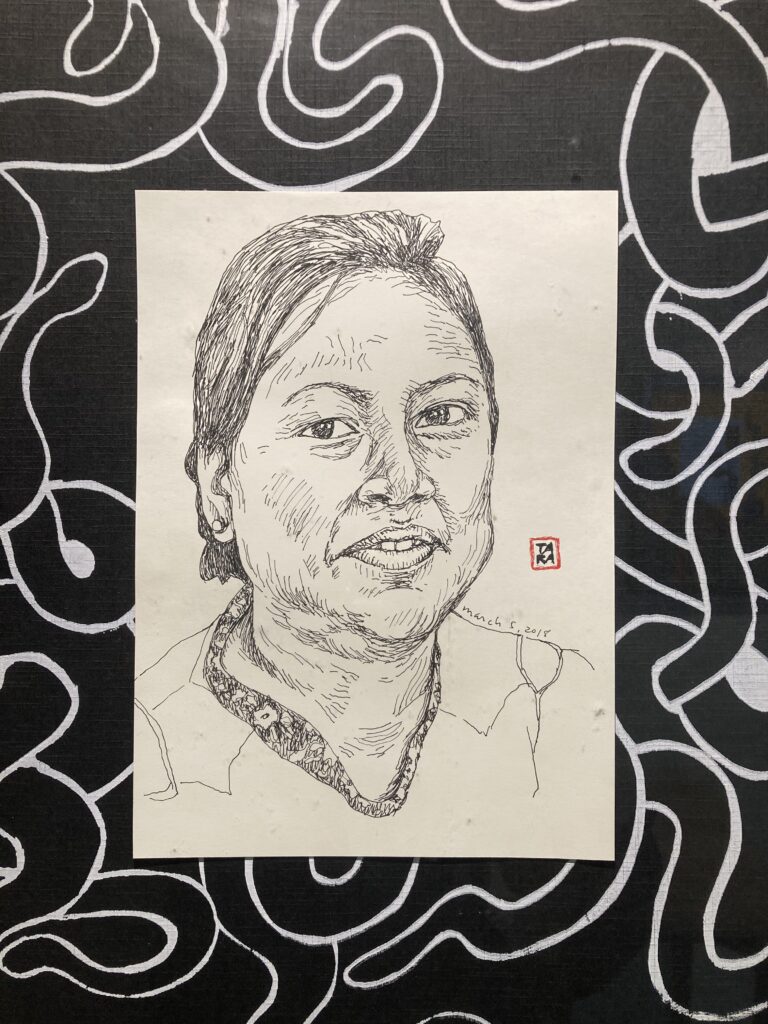
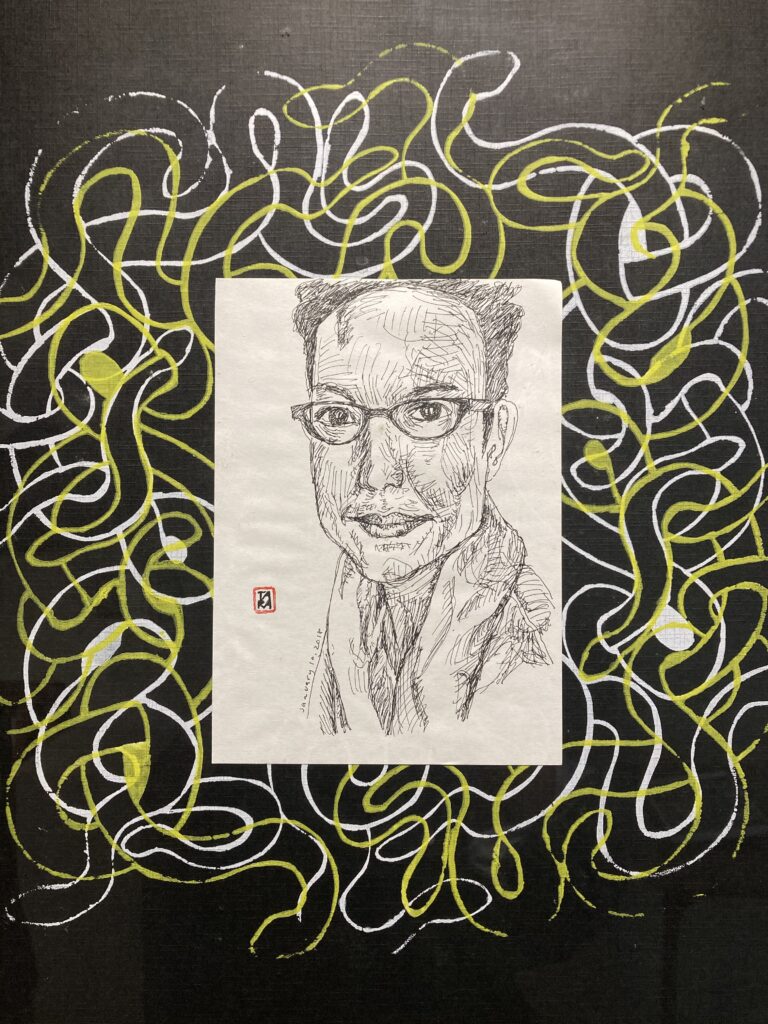
Shifting the angle from which one views the narrative is perhaps what the first artworks will prompt the visitor upon entering Mamusa’s gallery. We Are Medusa is a series of portraits in pen and ink surrounded by snakes drawn on the frames’ mat by Tara Illenberger.
“Every woman has experienced aggression or injustice from the patriarchy: be it unfair treatment in the workplace, unsafe streets, catcalls. I think that the snakes can be worn like badges,” Illenberger says.
The snakes on these drawings remind the viewer of Medusa. To many, she is an icon of dangerous females. Stories painted her as a monster who can turn men who stare at her into stone. On the other side of this story is a woman who was abused. The snakes serve as her protectors.
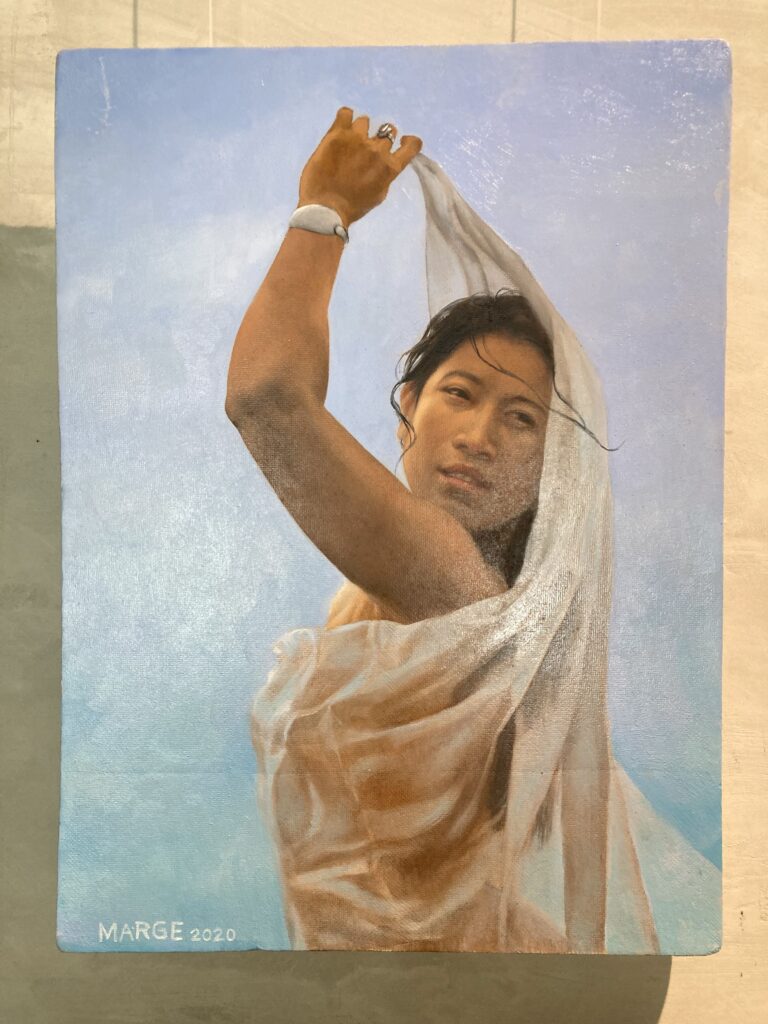
Another mystique in this exhibition is Marge Chavez’s”Summer by the Sea”, an oil portrait of a woman. Her body seems naked beneath the white shawl. Her hair cascades with the thin fabric blown by the breeze. Perhaps, if we look beyond the image as a tribute to the female form rendered delicately in the classical style, we see a woman slightly freeing herself behind the cover, not meeting the audience’s gaze.
The portrait is inspired by Chavez’s traveler friend who loves the sea and the sun. “I wanted to portray who she is, with her bronzed-skin and the careful rendition of her form to see the strength and endurance required in enjoying her demanding hobbies, as well as juxtaposing that to her feminine pose – with soft breezy wind and all that,” the artist shared.
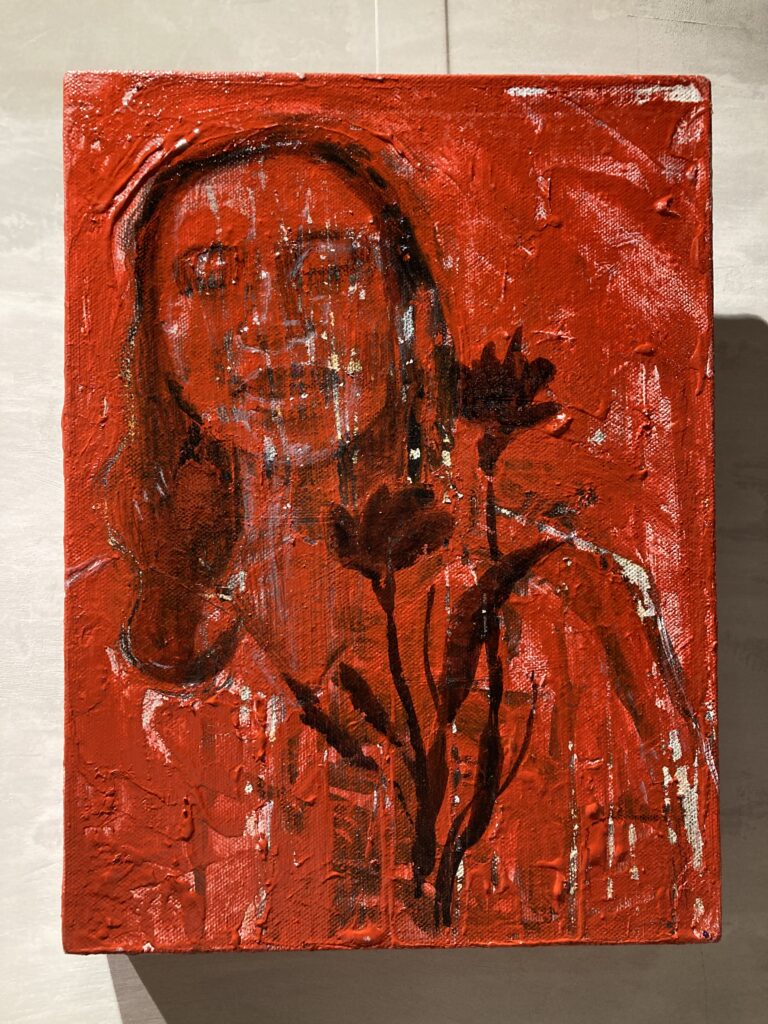

Between emergence and disappearance, is Erika Mayo’s “Red Series”. In each of the pieces, Mayo fills the canvas with red that evokes energy and passion. The same color is present in the artist’s past works. On the scarlet-colored canvas, she paints portraits of women using rough strokes. Whether these portraits are being covered or they are being brought to the surface is an allusion to the exhibition’s overarching “women empowerment” theme.
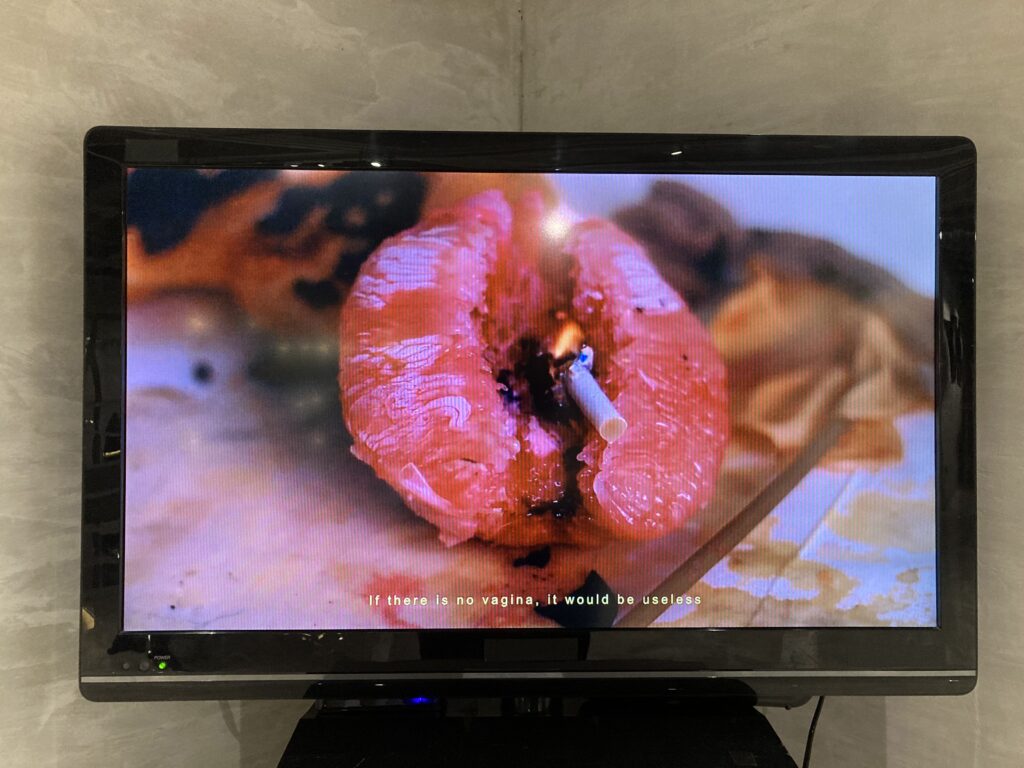
Perhaps what summarizes Mujer is a video from Roselle Perez where she questioned the treatment of women. Positioned in the corner of the gallery, the video features yonic objects from oysters to sliced fruits. At some point in the video, a hand appears and smashes a cigar’s end into a segment of a pomelo. This loop is scored by the infamous “joke” that Pres. Rodrigo Duterte made when he addressed the Armed Forces of the Philippines to shoot female rebels in the vagina. Alongside the video is the poem “creep” from American poet, Eileen Myles, suggesting that the misogyny experienced in America is analogous to what is happening in the country.
The other artworks in the exhibition experiment with materials such as metal in Regine Espinosa’s bas relief and fabric in Margaux Blas’s tapestry. While Shiela Molato and Elwah Gonzales explore genres with abstract work and expressionist painting, respectively.
Margaux Blas, who organized the exhibition, wanted to push for representation in the art scene. She hopes to continue organizing similar exhibitions every year.
Mujer is an exhibition that is more than just the pretty portraits of women, or the delicate materials that are forcedly associated with women artists – it presents its own visual vocabulary, one that is defined by the artists.